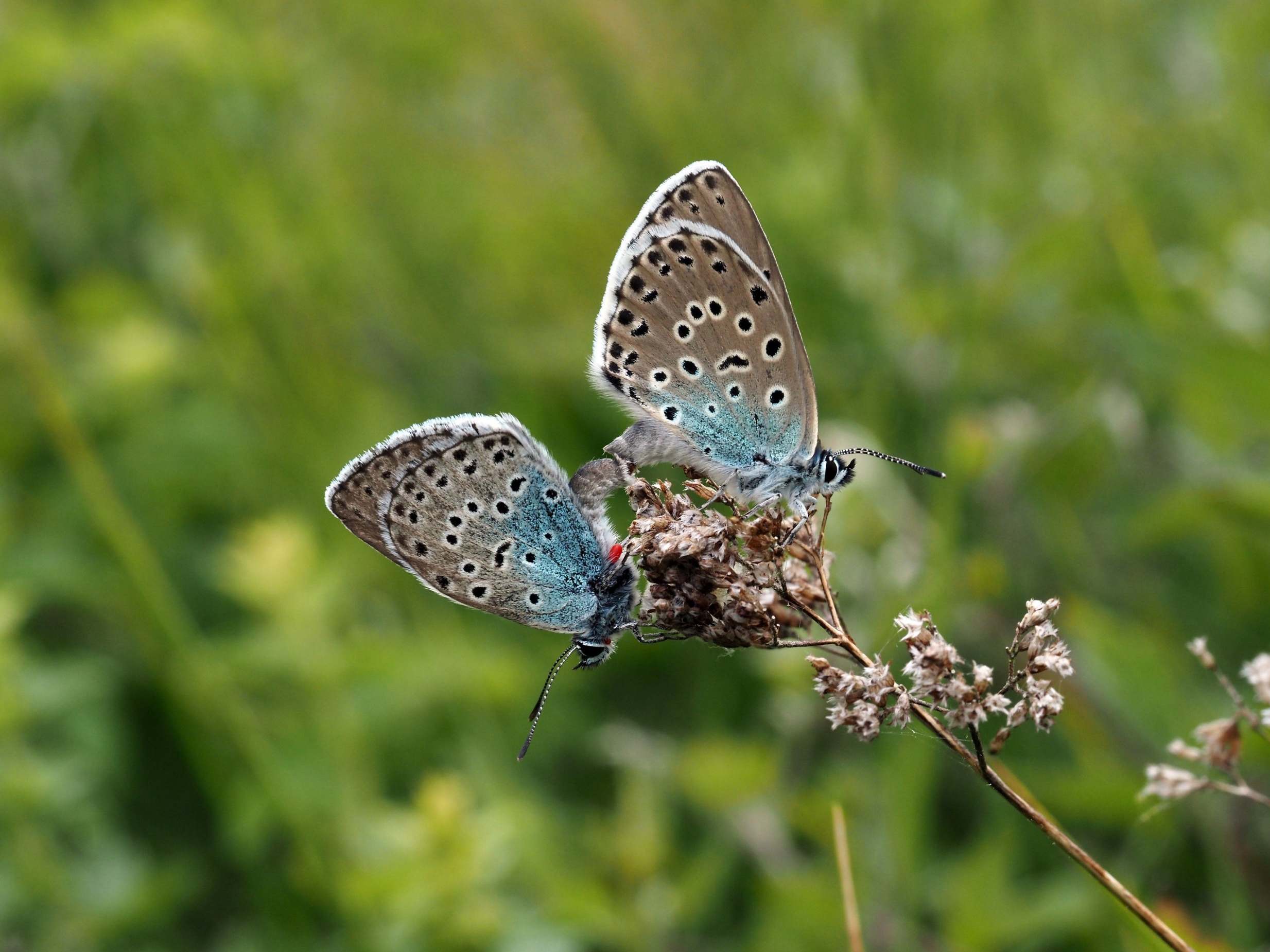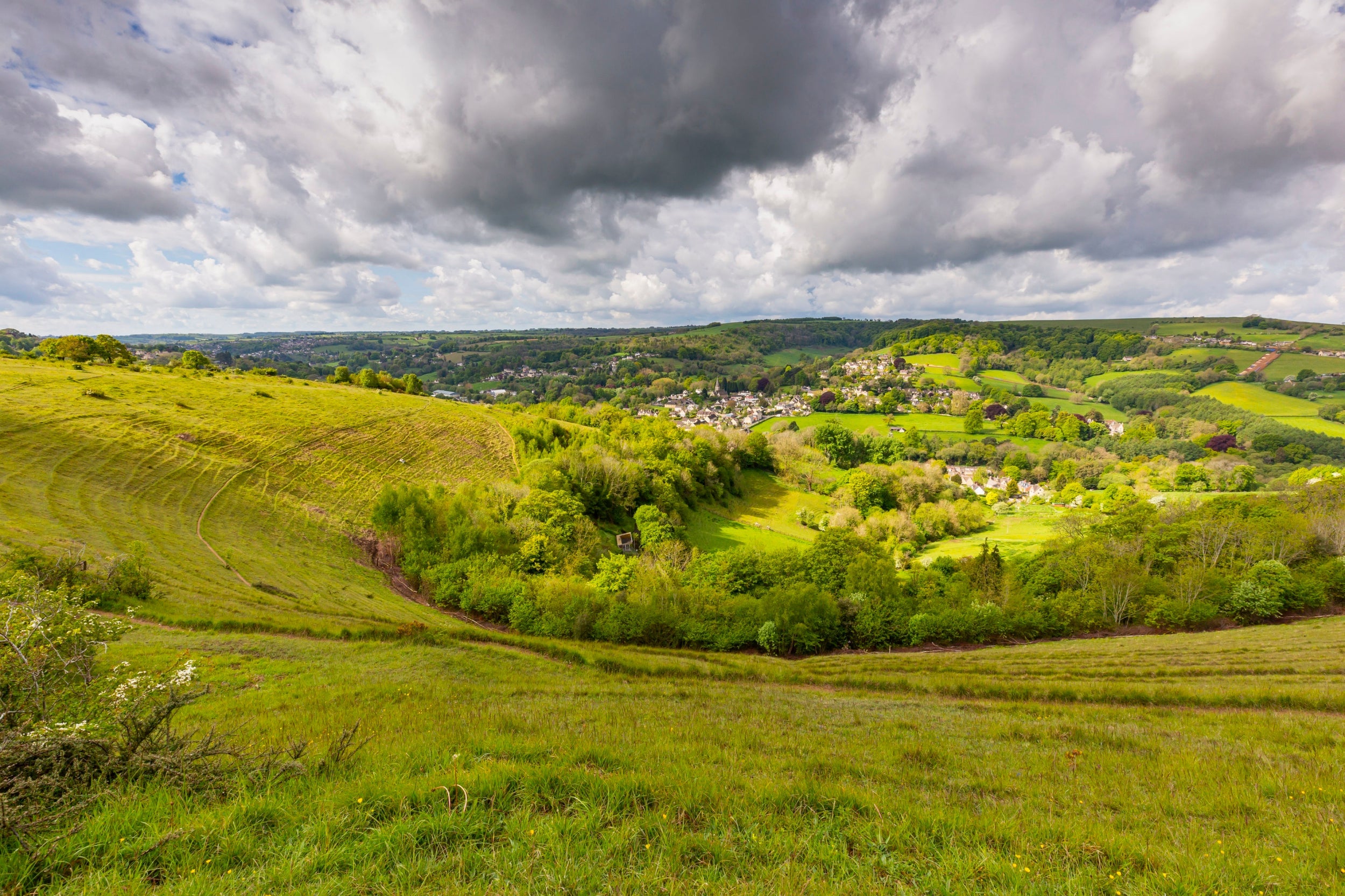Endangered large blue butterfly successfully reintroduced in Britain
The insects bred and laid eggs in the first year, writes Emily Goddard


A globally endangered butterfly that was once extinct in Britain has been recorded at Rodborough Common in Gloucestershire for the first time in more than a century after it was successfully reintroduced a year ago.
About 750 butterflies emerged at the 867-acre site over the summer, after the insects bred and laid eggs in the first year.
Some 1,100 larvae of the large blue butterfly, the largest and rarest of all nine British blue butterflies, were released to the National Trust-owned common last August, after five years of landscape preparation.
Large blue butterflies have a remarkable life cycle, which involves the larvae tricking a particular species of red ant into thinking they are their own young and carrying them into the nest where they feed on the ant grubs until they are ready to pupate and emerge the next year as butterflies.
The right conditions had to be created at Rodborough Common for the Myrmica sabuleti ant species and to encourage growth of wild thyme and marjoram, which the butterfly feeds and lays its eggs on.
Small temporary grazing areas were also created using electric fences, to allow cows including Luing, Hereford and long-horn cattle to graze slopes to provide the right conditions for the ants, and a programme of scrub control was carried out.
David Simcox, a research ecologist and co-author of the commons management plan, said: “The butterfly needs high densities of the heat-loving red ant Myrmica sabuleti, which has a crucial role to play in the life cycle of the butterfly.
“The grazing cows create the ideal conditions for them by keeping the grass down so sunlight can reach the soil which gently warms it, creating perfect conditions for the ants, which are cold-blooded and therefore need warmth in order to actively scout for food throughout the spring, summer and autumn.”

The success of the scheme led to the large blue butterfly being recorded at Minchinhampton and Rodborough Commons for the first time for 150 years.
Evidence of the butterflies breeding was recorded within the release area but also further away on the commons, indicating they had already expanded their range, the National Trust said.
The scheme at the grassland commons, which are also home to 14 species of orchid, rare pasqueflowers, Duke of Burgundy butterfly and rock rose pot beetles, is the largest reintroduction of large blues in the UK.
Dr Caroline Bulman, the senior conservation manager at Butterfly Conservation said: “The project is a fantastic example of positive partnership working between landowners, scientists and conservation organisations and shows just how much good can be achieved through working together.
“It’s exciting to see the large blue butterfly flying again at this site, helping to further enhance the future of this species, and other limestone grassland wildlife, in Gloucestershire.”
The species was declared extinct in Britain in 1979 and was first reintroduced from populations on the continent nearly four decades ago, establishing it at several sites across southern England, including in Somerset and Gloucestershire.
Despite the success of the large blue butterfly project, the National Trust warned that the coronavirus pandemic has had a major impact on its finances, just as it is focusing on nature and climate emergencies.
Ben McCarthy, the head of nature conservation and restoration ecology, said: “Now, more than ever, we need support so that we can continue with our vital nature conservation work to improve the state of nature in the UK and achieve carbon ‘net zero’.”
Additional reporting by Press Association
Join our commenting forum
Join thought-provoking conversations, follow other Independent readers and see their replies
Comments